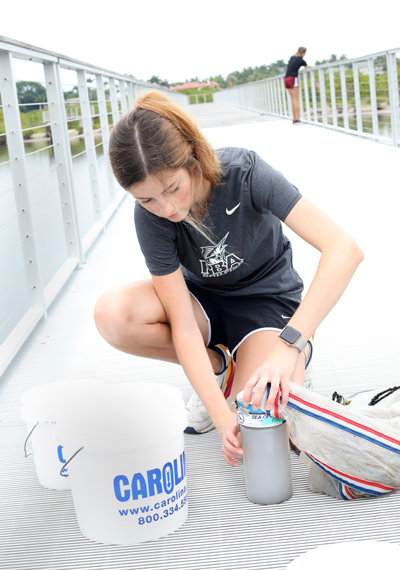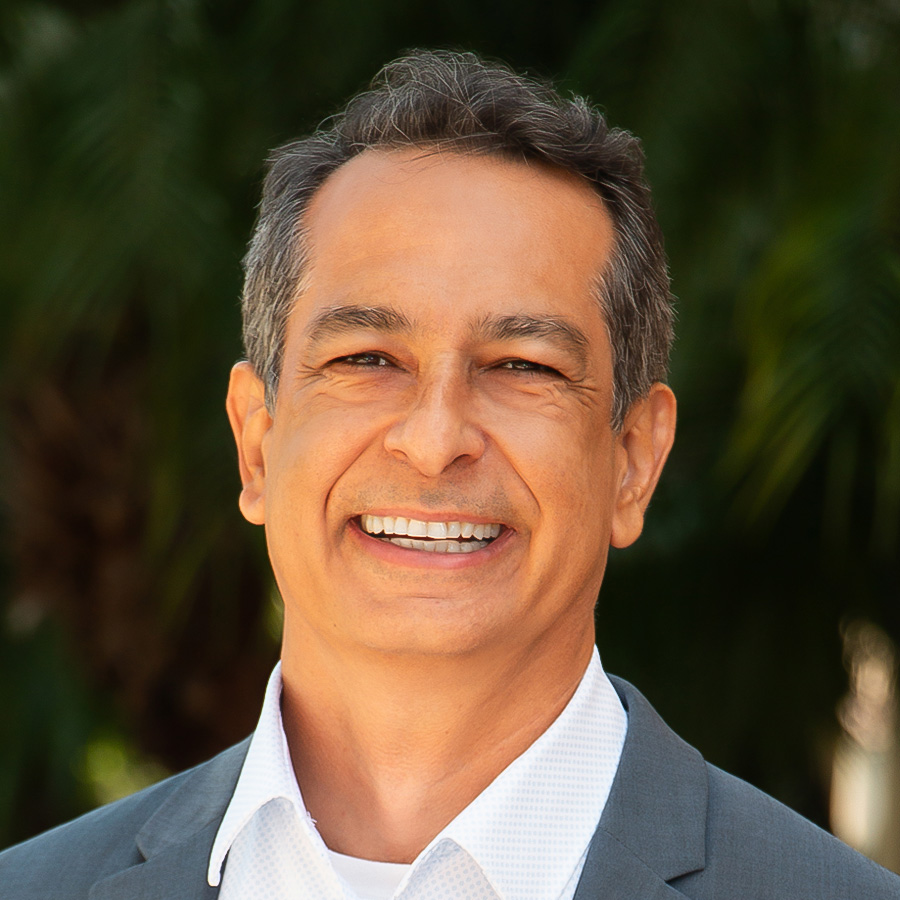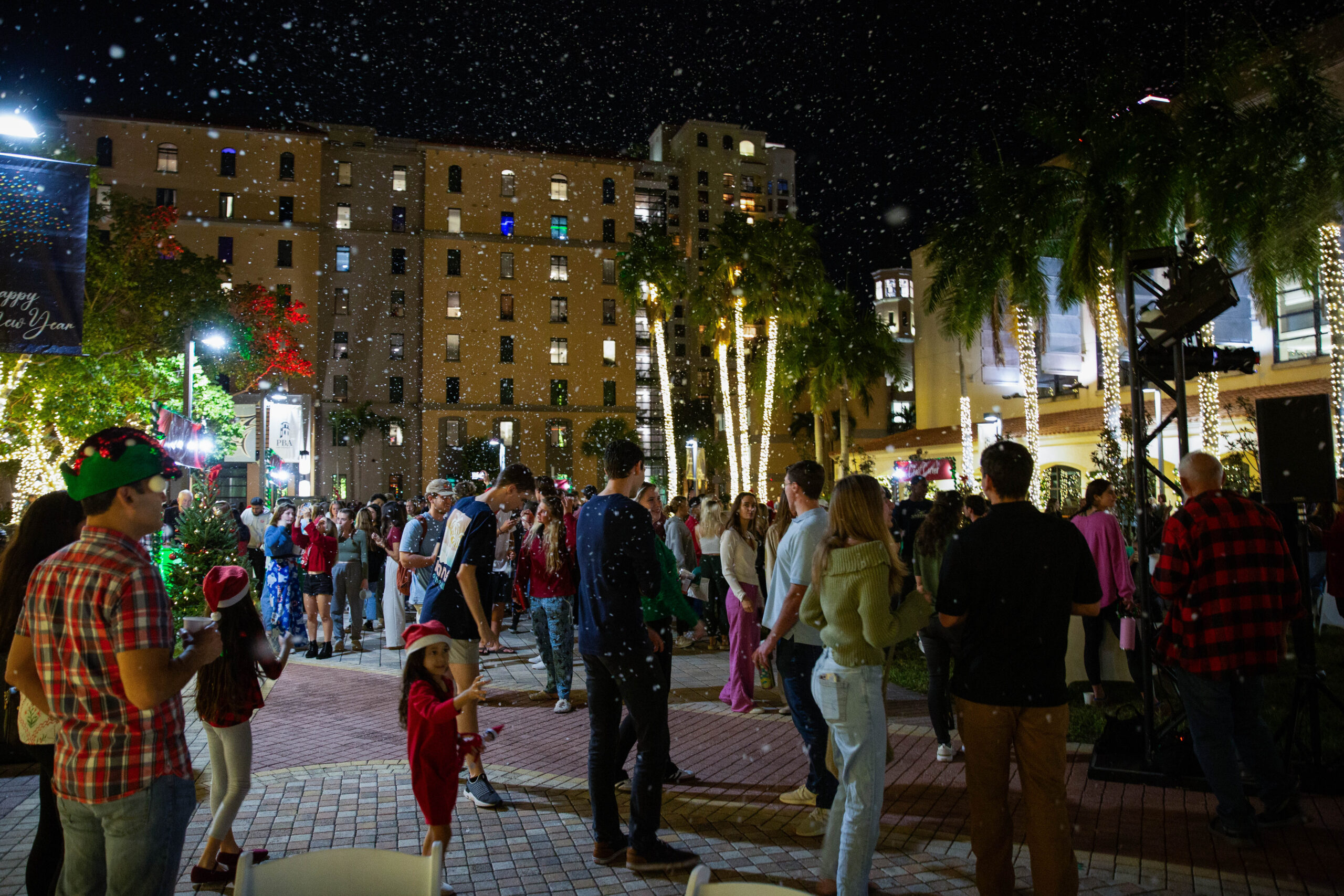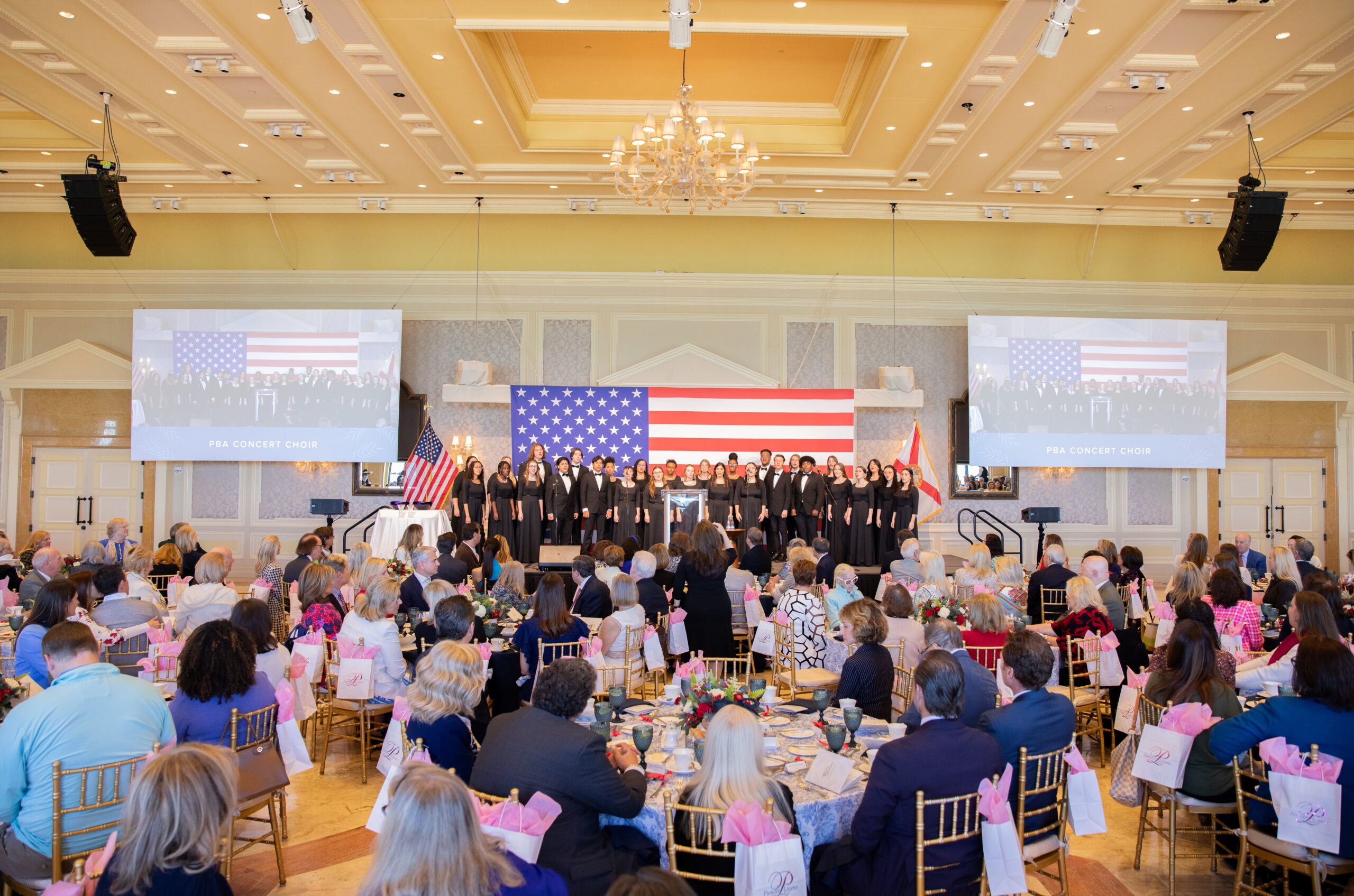
Seven students have teamed up with six faculty members from a variety of disciplines to work toward solutions for pressing problems facing society today.
Their summer undergraduate academic research (known as SUGAR) examines the following topics: RNA-related biochemical relationships that may play a role in chronic diseases; recovery of ecosystems after beach renourishment; digital literature and literary studies; the impact of imperial military experience on the first two years of World War I; characteristics of algae known for causing red tide; and the creation of a natural immunity to a common intestinal disease in commercially-raised chickens.
Participating in the research are Dr. Jackie Esquiaqui, assistant professor of chemistry, and LesleyMarie Rivera, a biology major in the pre-health professional preparation concentration; Dr. Angela Witmer and Amberlynn Stuart, a marine biology graduate, and Ashton Senti, a biology major in the zoology concentration; Dr. Carl Miller, associate professor of English, and Tannisse Clark, an Englishmajor; Dr. Elizabeth Stice, associate professor of history, and Paige Stanish, a history major; Dr. Christina Batoh, assistant professor of biology, and Kristin Jenkins, a marine biology major; and Greg Rummo, chemistry lecturer, and Alyssa Macaluso, a biology major in the pre-health professional preparation concentration.
Batoh, an expert on the Karenia brevis algae that causes Florida’s red tides, is working with Jenkins to research what causes the single-celled algae to shape-shift. While K. brevis is found in coastal waters throughout Florida, the highest concentrations usually appear in the Gulf of Mexico, Batoh said. It is important for scientists to identify the algae — even when it’s in an unusual shape — so that they don’t underestimate its presence in water samples during a harmful bloom.
Jenkins, a junior from Dayton, Ohio, came to PBA for opportunities such as this, she said.
“PBA’s one of the few schools that has marine biology as a major,” Jenkins said.
Batoh and Jenkins are studying whether microscopic predators that feed on the algae cause it to morph. Being at the base of the marine food chain, the interactions between K. brevis and predators can impact all other marine life, from foraging fish to apex predators.
“That’s why it’s so important that we understand the dynamics between K. brevis and zooplankton,” Batoh said.
To conduct their research, Batoh and Jenkins gathered microscopic marine life from the Lake Worth Lagoon by going to the South Cove Natural Area and tugging a net of fine mesh through the water. Afterward, they examined the aquatic life under a microscope in the lab.
“It’s a really great way to show students how to use microscopes and learn classical oceanographic techniques,” Batoh said.
Jenkins said she’s learning more working one-on-one with Batoh than she would in a lab class. “Doing any kind of research with a professor always looks good on a resume. I’m gaining skills for graduate school that will put me ahead of my peers who haven’t done this.”
Esquiaqui and Rivera’s project is a crossover of biology and chemistry. They are studying the structure of RNA, specifically functional relationships with microRNAs. Similar to DNA, RNA is genetic material. Instructions for cells, which make up living organisms, including the human body, are encoded in DNA and RNA. DNA is the “blueprint,” so to speak, and as such, is very protected, Esquiaqui said. When DNA needs to be used, a copy is made. The copy is RNA.
One class of RNA is microRNAs, which communicate with and regulate messenger RNAs (mRNAs). The regulation and control of mRNAs by interaction with microRNAs may impact diseases such as cancer, cardiovascular diseases and autoimmune diseases, depending on what messages are increased or decreased, Esquiaqui said.
“This concept of RNA-RNA interaction and control is known to influence the metabolism, health and proper function of cells,” Esquiaqui said.
In the humanities research on the impact of imperial experience on the Great War, Stice and Stanish are examining the school newspaper of Harrow, a prominent British boarding school with a long history of military service, to establish links with the empire. The duo is also going to study The Times and The Oxford Dictionary of National Biography database to determine how many of the school’s pupils who died in the Great War had imperial experience and if so, what kind.
Also in the humanities, Miller and Clark are examining the larger academic and popular applications of the digital humanities, a growing field within literary and interdisciplinary studies that points to the future of literature. In addition to conducting a survey of existing university models of study and research in electronic literature, Miller and Clark have researched the impact of digital literary prizing and the ways that conceptions and assessments of prestige apply to award-winning digital texts.
In the sciences, Rummo and Macaluso, a biology student who plans to become a veterinarian, are studying if an intestinal disease common to chickens can be prevented by supplementing chicken feed with a bacteria known to produce monensin as a “probiotic” and getting that probiotic to colonize in the chickens’ gut.
“I wanted to be part of summer undergraduate academic research to experience what it’s like to work in the research setting and use the skill I’ve learned in my other classes,” Macaluso said.


